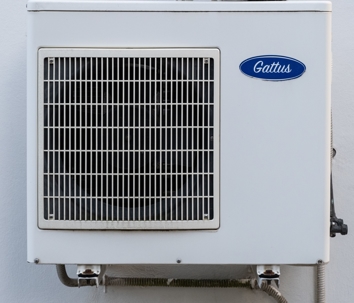Understanding Heat Pumps HSPF Ratings
What Are HSPF Ratings And Why Do They Matter?
Seasonal Performance Factor (HSPF) and is a way to express and rate the energy consumption of heat pumps. The Department of Energy (DOE) has recently refined the testing procedure for determining HSPF, resulting in the creation of HSPF2, a more accurate scale to measure heat pump efficiency. When assessing heat pumps, the higher their HSPF2 rating, the more energy efficient the system is. The DOE assesses HVAC energy efficiency standards every six years and typically releases new minimum requirements based on recent technological advancements and technologies.
As of January 1, 2023, all new heat pump systems must conform to new HSPF2 rating standards and labeling requirements as issued by the DOE.
HSPF versus. HSPF2 Minimum Ratings
While California is part of the Southwest Region, HSPF ratings apply to all regions in the United States without any deviation. SEER ratings, however, are region-specific. Under the HSPF rating system, heat pumps needed a minimum rating of 8.2 to be compliant. Under the new HSPF2 rating system, heat pumps must have a minimum rating of 7.5 (this would be a rating of 8.8 under old HSPF ratings).
Some systems manufactured before 2023 will be compliant with new energy efficiency standards but not all. If you are purchasing a heat pump manufactured prior to January 1, 2023, make sure that you are buying one with the correct HSPF rating.
Review these past blog posts to learn more about changing HVAC energy efficiency standards:
If you have questions about changing HSPF ratings or other new regulations coming in 2023, give Valley Heating, Cooling, Electrical and Solar a call. Our HVAC team is well-versed in all federal and state HVAC regulations and we are prepared to answer your questions.
Why You Might Consider Replacing Your Heat Pump in 2022
With the change in HSPF ratings to the new HSPF2 rating standards, the price of heat pump systems is expected to increase significantly. As such, we recommend that customers consider replacing their heating systems with a new heat pump before the end of the year. Many recently manufactured heat pumps have excellent energy-efficiency ratings and are not only compliant but also exceed the minimum rating requirements being introduced in 2023.
By purchasing in 2022, you can take advantage of current pricing – and some models may even be on sale in anticipation of the new rating and manufacturing changes.
Signs You May Need a New Heating System
A new heat pump is a large investment. The first step in planning for a new heat pump or heating system purchase is to be aware of the signs that your current system is no longer efficient. Generally, a well-maintained heating system will last anywhere from 15 to 25 years, depending on your system type (heat pumps tend to last around 25 years on average). If your system is over 15 years old, you should start planning for a replacement.
Other signs that you may need a new heating system soon:
- You have frequent repair problems
- You are losing efficiency each year
- Your heating bills are going up despite no change in your usage
- Your system struggles to keep your home at a stable temperature
- Youandrsquo;ve seen a significant reduction in your air quality while using your heater
- Your current system is not adequate for the size of your home or your heating needs
If your current heating system is ten years or younger, is well-maintained, meets your heating needs and you expect it to last another seven to 10 years, now is likely not the time to replace it. However, if you are unsure, give Valley a call. Our team will inspect your system and help you determine when you can expect to need a replacement.
At Valley, we will never recommend a heating system replacement when you do not need one. Our top priority is your satisfaction, and we will always provide you with honest guidance.

